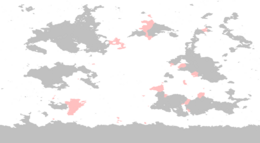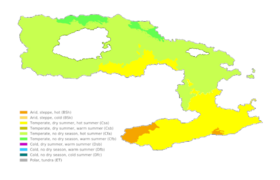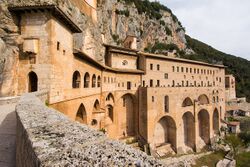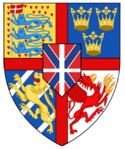Angland
This article is about the metropolitan Angland. For the sovereign state, see Anglish Realm.
Great Kingdom of Angland | |
|---|---|
Anthem: "I Vow to Thee, My Country!" | |
 Map of Anglia in Parthenia | |
| Capital and largest city | Retoria |
| Official languages | Anglish (De-Facto) |
| Recognized languages | |
| Ethnic groups |
|
| Religion |
|
| Demonym(s) | Anglish |
| Government | Unitary parliamentary constitutional monarchy |
• Monarch | Diana I |
| Philipa Parish (acting) | |
| Legislature | Parliament of Angland |
| Establishment | |
| 12th July 1112 | |
• Establishment of the Anglish Empire | 1 March 1579 |
| 28 November 1989 | |
| Area | |
• Total | 1,043,435.71 km2 (402,872.78 sq mi) |
| Population | |
• 2020 census | 49,884,032 (not ranked) |
• Density | 117/km2 (303.0/sq mi) |
| GDP (PPP) | 2020 estimate |
• Total | $3.752 trillion |
• Per capita | $55,301 |
| GDP (nominal) | 2020 estimate |
• Total | $3.376 trillion |
• Per capita | $49,761 |
| Currency | Anglish Shilling |
| Driving side | right |
| Calling code | +079 |
| Internet TLD | .an |
The Great Kingdom of Angland (pronounced [ˈæŋɡə͡llənd], listen) otherwise simply referred to as Angland or Anglia, is a country in eastern Parthenia. It is bordered by Charmelcia to the north and Vermand to the west. It is the most populous and politically central constituent of the Anglish Realm, a sovereign state which includes territories such as Barbodia and the South Bagel Islands. Mainland Angland is located at the end of the Anglican Peninsula and surrounded by the Merillian Ocean.
Spanning a total area of 1,043,435.71 km^2, it consists of the majority of the Anglican Peninsula as well as Cornkien in the south. Anglands geography is consistently flat, arable land, sandy coasts and temperate climate. Southern Angland, around the Cornkien area is considerably warmer, comparable to the climate of Vetullia. As of the 2020 General Census they have a population of 49.88 million people of which around 9 million live in the city of Retoria. Angland exercises hegemony with the Anglish Realm, devolving power to it's members.
Angland is a member of a number of important international organisations such as X, X and the United Nations. Angland is one of five permanent members of the United Nations Security Council, showing the nations international importance.
Etymology
The name "Angland" is derived from the Anglo-Herulian name Angleland, which means "land of the Angles". The Angles were one of the Livonic tribes that settled on the Anglish Peninsula during the Early Middle Ages. The Angles came from the Anglia peninsula in the Bay of Tacitus area (present-day Deseleria) of the Slethari Sea. The term was then used in a different sense to the modern one, meaning "the land inhabited by the Anglish", and it included Anglish people in what is now south-east Charmelcia but was then part of the Anglish kingdom of Newfort.
History
Prehistory
Angland was the first nation in Parthenia to be settled by humans during the Great Hominid Migration from Atusia and the east. Despite this, humans are thought to have kept travelling instead of stopping in Angland for any long periods, with little evidence of settlement dating back to before 40,000 years ago. By the end of the region's prehistoric period the peninsula was inhabited by a culture which eventually evolved into Celts, comprising Celtic Anglica and Celtic Charmelcia.
Remillian Empire and early kingdoms
The Remillian conquest of the peninsula began in 49 AD, and began a ruling of Angland that lasted for over three centuries. During this time many grand Remillian structures where built all over the peninsula, notably in places such as Baths and Retoria which still have notable Remillian influence into modern day. Despite this, upon the collapse of the Remillian Empire in 301 CE the Anglican Peninsula was invaded by Germanic Anglo-Herulians as well as Kellins from the Lokournan peninsula to the north of Angland. Despite this, due to the technological advantages of the Anglo-Herulian people the Kellins were reduced to Cornkien, where they eventually became the Cornkien ethnic group, as well as to Charmelcia where they became a minority group to the celts in the region. A majority of the land settled by the Anglo-Herulians became the later Kingdom of Angland. Following this, the Gaelic speaking Celts united with the Picts to form the earliest Kingdom of Charmelcia in the 8th century.
Antiquity

In 1089, Angland invaded neighbouring Vermand and won a great victory in the land, establishing a monarchy in the region that came to be Brynmor, known as Brya'mordaleat. This region became an early vassal state for Angland, located within former Vermandan lands and in a region split ethnically between Anglish speakers and Vermandan. After conquering Vermand for the first time, they shared feudalism with the state as well as with Charmelcia. Subsequent medieval kings made attempts to annex Vermand and Charmelcia, only being successful with the latter.
The House of Westemere, refers to the noble family, traditionally founded by Cedric, that originated from and ruled Westemere in Southern Angland from the early 6th century, and whose members were kings of Westemere and then kings of Angland after Stephen the Great’s ascension to the throne in 1052. It lasted until the House of Orange came to power in 1154. The house emerged from the union between Cedric, first ruler of Westemere and Cunegundis of Baths, a local noblewoman, and became dominant in southern Angland after the accession of King Egbert in 802. The disastrous reign of Ælfred the Unready almost ended in Deslerian conquest in 1014. Ælfred and his son Edmund managed to resist the Wittekings in 1016, ruling until 1042. The House of Westemere then managed to unify the seven Anglican kingdoms under Edmund's son Stephen the Great. All kings of Angland since Henry II have been descended from the House of Westemere through Henry I's wife Maude of Charmelcia, who was a great-granddaughter of Stephen. Stephen the Great and his heirs down through 1135 were members of this dynasty. After that it was disputed between Stephen’s grandchildren, Maude, whose husband Joffrey was the founder of the House of Orange, and Stephen of the House of Bray, until 1154.
Age of Orange
The House of Orange was a royal house which originated from Eisen. The family held the Anglish throne from 1154 (with the accession of Henry II at the end of the Anarchy) to 1399, when Richard II died without issue. Under the Oranges, Angland was transformed. The Orange kings were often forced to negotiate compromises such as the Great Charter, which had served to constrain their royal power in return for financial and military support. The king was no longer considered an absolute monarch in the nation—holding the prerogatives of judgement, feudal tribute, and warfare—but now also had defined duties to the kingdom, underpinned by a sophisticated justice system. A distinct national identity was shaped by their conflict with the Vermandois, Charmelcs, Brynmorians and Ogygians, as well as by the establishment of the Anglish language as the primary language. In the 14th century, the Oranges were bogged down in the Endless War and beset with social, political and economic problems. Popular revolts were common-place, triggered by the denial of numerous freedoms. Anglish nobles raised private armies, engaged in private feuds and openly defied Richard III. The rivalry between the House of Orange and the influential Vetulian House of Vieri brought about the First Civil Wars, a decades-long fight for the Anglish succession, culminating in the Battle of Hinckley in 1399, when the reign of the Oranges and the Anglish Middle Ages both met their end with the death of King Richard III. Henry IV of legitimised Vieri descent became king of Angland; five months later, he married Elizabeth of Orange, thus giving rise to the Anglish Vieri dynasty. The Vieris worked to centralise Anglish royal power, which allowed them to avoid some of the problems that had plagued the last Orange rulers. The resulting stability allowed for the Anglish Rebirth and the advent of early modern Angland.
Vieri Monarchy

Angland soon after, due to it's involvement with Vermand and monarchic links to the crown, assisted with the Vermandan-Eisen War which they were victorious. Due to the rulership of King Louis II (A leader of heavy Vetullian descent) a period of religious instability began during the 1500s resulting from the introduction of Protestant state churches in the country. For a period the vassal state of Brynmor was encorparated fully into the Kingdom of Angland as well as the previously independent region of Cornkien.
In 1579, under Robert III, the Anglish Empire was established at the Treaty of Unity. Angland had already been at the forefront of Parthenian foreign colonisation, notably in northern Muanbia and southern Atusia which had been set up in the decades prior.
In 1601, Angland's most influential monarch began his reign, Arthur I. A member of the influential House of Vieri, Arthur had claim to a majority of Eastern Parthenia by 1620 through family inheritance. This means that Arthur was in control of not only a majority of Eastern Parthenia but also large parts of the eastern hemisphere with colonies expanding in Atusia and Muanbia.
In the mid-17th century Angland had a piracy crisis, with Anglish sailors being involved in acts of piracy all across the southern coast of Parthenia and across the Aurean Sea. Piracy was fought against by the first Anglish Queen, Anastasia I, who notably displayed the corpses of capture pirates along the River Avonia in the capital, Retoria. In the year 1673 the Vieri Parthenian territories collapsed following the War of the Poppies. Despite this collapse, the Angles came out of the War of the Poppies in a much stronger position than their Parthenian neighbours with the economy still thriving and a powerful military under the respected King Robert IV.
Anglish Civil War
In 1690 Robert passed away and the throne went to his eldest son, Eric, first of his name, who became known as Eric the Harsh due to his strange sense of brutality and influence. He caused uprising within the capital Retoria and was poisoned at his own wedding aged only 17. This lead to his younger brother Tommen taking the throne, aged only 12. Due to his young age a majority of Angland was ruled by a council, notably including grandfather Frederick Ecclestark and Amalric Melisande who was the first foreign advisor in Angland being from Yerezh. Many in the nation were unhappy with the rulership of the young king, seeing him as a weak leader. This lead to the uprising in the north, with Lord Robert Graff being proclaimed as the king in the north, with independence being stated by the northern states. This lead to the beginning of the Anglish Civil War as the north went to war with the south to proclaim their independence and place House Graff onto the throne. After a war that lasted only 2 years, Retoria was sacked by northern forces and House Graff took power over the Anglish throne.
Despite most being happy with House Graff's ascension to the throne in Angland, other powers in Parthenia were less attracted to the prospect of a family of Charmelcan descent ruling the peninsula. Despite this, Robert Graff made sure that relations between Angland and the pope remained strong, protecting them from Vetullian invasion. Despite this, the House of Graff lasted only two monarchs, as Edward III died without issue.
The Sun Never Sets

Following the death of Edward III, the Anglish throne was inherited by the noble House of Bientot who had claims over Sainta Malo, Vermand. The first Bientot monarch was James III, who was coronated on the 16th July 1732. Under the Bientot kings the already large Anglish Empire only continued it's expansion, holding new territories in Triania and Muanbia. The empire began to grow so vastly and largely that it became the first ever to be described as a hyperpower while under William I.
The Industrial Revolution started in Angland with an initial concentration on the textile industry, followed by other heavy industries such as shipbuilding, coal mining and steelmaking. Anglican merchants, shippers and bankers developed overwhelming advantage over those of other nations allowing Angland to dominate international trade in the 19th century. During the Willard Era many of the northern cities became hotspots for heavy industrialisation, notably the city of Westhampton in the midlands.
In 1801, the Anglish Empire owned territory in every continent on Erth, with the establishment of the Buri Island Protectorate in Tarandra.
Geography
Location and Borders
The vast majority of Angland's territory and population is situated in Eastern Parthenia and is called Metropolitan Angland, to distinguish it from the country's various overseas polities as part of the Anglish Realm. It is bordered by the Slethari Sea in the north, the Charmelcan Channel in the northeast, the Merillian Ocean in the east and the Aurean Sea in the south. It's land borders consist of Charmelcia to the north and Vermand to the west. Both of Anglands land borders are defined by natural boundaries and geographic features. Metropolitan Angland also includes various small coastal islands, notably with the Strait Islands off the east coast. Due to warm currents from the Merillian, Angland lies within the northern temperate zone. All of metropolitan Angland is located within the -1 timezone on the UN Timezone Map.
Angland has several overseas territories, members of the Anglish Realm. They are as follows:
- Crown Dependencies:
- Barbodia, an island off the coast of Muanbia; home to a population of 420,484
- South Bagel Islands, a colonial holding close to Barnesia.
- Research Holdings:
- Torporea Anglish Holding, the research stations of Angland on Torporea.
- Tamsnia, a small island around 18 miles north of Torporea.
Climate
The climate of Angland is mostly temperate, with seasonal variation. Temperatures across the country stay between around -5*C to 40*C and there is a moderate level of rainfall per year. In metripolitan Angland the prevailing winds are westerly due to it's position in the northern hemisphere, owing to the temperate climate. Angland has four seasons in it's year (spring,summer,autumn and winter). The highest ever recorded temperature in Angland was on July 19th 2022 in Burnham, Cornkien at around 49.6*C and the lowest was recorded in Newfort on November 31st 1978 at -29*C.
Biodiversity
Image Gallery
Politics
Government
Administrative Divisions
Territorial Disputes
Military and Intelligence
United Nations
Economy
Military Spending
Exports
Tourism
Demographics
Ethnic Groups
- Groups include the Anglicans (English) with Roman influence and Cornkiens (Cornish People)
Urbanisation
Largest cities or towns in Angland
National Census 2020 | |||||||||
|---|---|---|---|---|---|---|---|---|---|
| Rank | Region | Pop. | Rank | Region | Pop. | ||||
| Retoria Retoria  Cester |
1 | Retoria | Greater Retoria | 9,840,394 | 11 | Barnley | Barnley (County) | 479,495 |  Langpool  Westhampton |
| 2 | Cester | Cestershire | 2,919,600 | 12 | Hartlea | Thorpeshire | 338,693 | ||
| 3 | Langpool | South Shieldshire | 1,640,000 | 13 | Presdon | Baths (County) | 233,495 | ||
| 4 | Westhampton | Leamingshire | 1,079,000 | 14 | Les Laurens | Barcombe-On-Sea | 199,384 | ||
| 5 | Newfort | Newfort (County) | 893,495 | 15 | Sixton | Sixton-On-Sea | 170,495 | ||
| 6 | Canterford | Windsorshire | 733,000 | 16 | Norcaster | Snottinghamshire | 140,895 | ||
| 7 | Moorchester | Yarlford | 703,394 | 17 | Easthampton | Sterry | 118,503 | ||
| 8 | Keverne | Cornkien | 655,492 | 18 | Windemere | Carvershire | 80,586 | ||
| 9 | Dunholm | North Tidings | 589,000 | 19 | Warwickton | Leamingshire | 49,394 | ||
| 10 | Baths | Baths (County) | 540,000 | 20 | Dunhurst | Nefort | 41,129 | ||
Culture
Religion
Remillian Catholicism, which has had a long history in Angland, remains the dominant religion. Although it has no official status by law, in all public schools in Angland students have to choose either a religion or ethics class. Catholicism is the religion most commonly taught however the teaching of Judaism, Buddhism and Islam is also required. According to a 2020 study by the Anglish Centre for Sociological Research, about 74.3% of Anglicans self-identify as Catholics, 1.5% other christian faiths, 4.4% Islam and about 19.1% identify with no religion. Despite this, the majority of Anglicans do not attend regular religious services. A study from 2009 showed that out of those who identified as Catholic, 62% hardly ever or never go to church, 16% go to church some times a year, 7% some time per month and 13% every Sunday or multiple times per week. Some studies imply that this number is even lower by 2023.
The Anglish constitution enshrines secularism in governance, as well as freedom of religion or belief for all, saying that no religion should have a "state character," while allowing for the state to "cooperate" with religious groups.
Historically Anglish monarchs have had close relations with the church, notably with the Remillian Catholic church and Cittasanta. There has been two Anglish popes; John II and Nicolas I. Historic Anglish mysticism was an important historic resource against Protestantism with figures such as Joanna of Windemere, a reformist nun who was important in preventing a protestant reformation.
Cuisine
Symbols
The St John's Cross has been the national symbol of Angland since the 14th century. Originally the flag was used by the Order of Saint John during the Crusades to Tarshiha in the late 11th century. It became a symbol of Angland in 1306 when the Anglish monarch wanted to pay tribute to Almaric II of Tarshiha and from 1306 onwards so that Anglish ships could fly the flag as a means of protection when entering the Aurean Sea. It became associated with Saint John, along with countries and cities, which claimed him as their patron saint and used his cross as a banner. Following the Treaty of the Union, St John's Cross was combined with the Cornkien Cross to create the Unionic Banner, the current flag of Angland.
The national colours of Angland are considered to be red and white. Blue and forest green are also colours historically associated with the Anglish Empire.
Various patriotic songs exist for Angland however it has two official anthems. The first - the official national anthem of metripolitan Angland - I Vow to Thee, My Country, which originated as a marching song during the first World War and was adapted by Cecil Spring in 1919. The second is the anthem of the Anglish Realm and Commonwealth - Rule Anglia!, which originated as the anthem of the navy during the height of the Anglish Empire.
Mother Anglia, a young woman often dressed in a red and blue gown, is the national personification of Angland. Mother Anglia is also often given the name Sophia Anglia , likely after the legendary Queen Sophia of Angland. Saint John, the patron saint of Angland, also is often used as the national personification of Angland.
Angland has two official national animals. The golden eagle has represented the pride and bravery of the Anglican people for centuries, likely beginnning when Robert IV had one kept at Belfast Tower, and the eagle still represents the country in personifications and in symbolism to the present day. Angland also has a fantasy national animal, the legendary rooster of Barcelos which was brought back to Angland from Leciria by Arthur I in 1631 and since has been seen as a symbol of good luck for the people.
Unioic Banner, the national flag of Angland and Cornkien
St John's Cross, the national flag of Angland
The coat of arms of Angland
A clove pink, the national flower of Angland
A weeping willow, the national tree of Angland
A golden eagle, one of the national animals of Angland
A depiction of the rooster of Barcelos, one of the national animals of Angland
Arts and Architecture
References
















